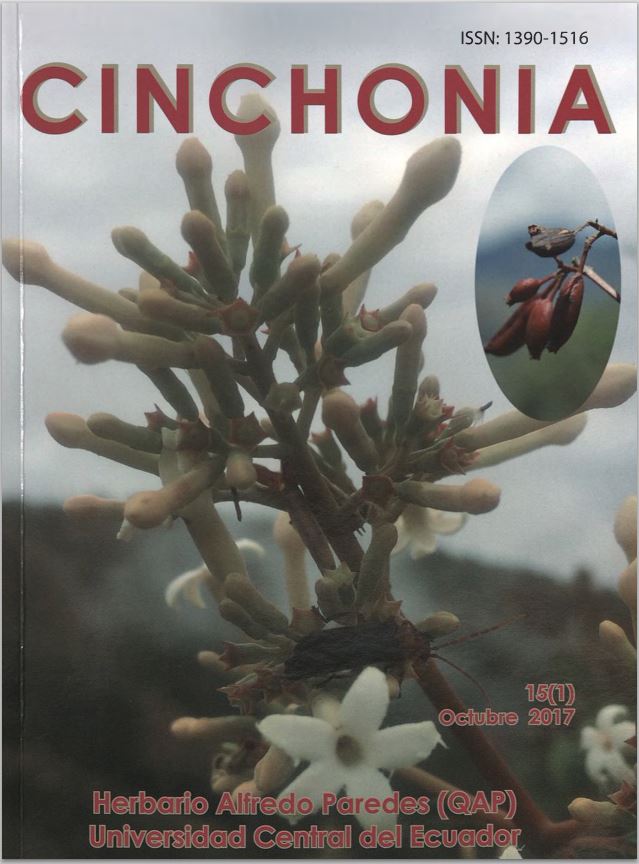Descripción de primeros registros micomórficos para el Ecuador
Contenido principal del artículo
Resumen
El Museo Arqueológico Antonio Santiana de la Universidad Central del Ecuador de la ciudad de Quito, posee un acervo de piezas arqueológicas importantes para el estudio del comportamiento social de los antepasados de esta región, constituyéndose en el sitio estratégico para localizar dos posibles figuras micomórficas. Una de ellas en diseño pictórico decorando un recipiente cóncavo con caracteres similares al gasteromicete Geastrum sp., perteneciente a la cultura Cuasmal; la segunda caracteriza un cáliz ceremonial de forma parecida a un macrohongo agaricomicete, realizada por la cultura Manteña. Estas piezas representan vestigios que explican el posible uso de macrohongos, vistos como organismos útiles y sagrados, utilizados para eventos rituales. También revelan la importancia de estudiar, mediante la bioarqueología, costumbres micófilas compartidas con otras comunidades del continente americano, con quienes existió un fuerte intercambio de productos y conocimientos que se expresan hasta nuestros días, aunque en menor grado por el advenimiento de la vida moderna y la mezcla de culturas.
Detalles del artículo

Esta obra está bajo una licencia internacional Creative Commons Atribución-NoComercial-SinDerivadas 4.0.

